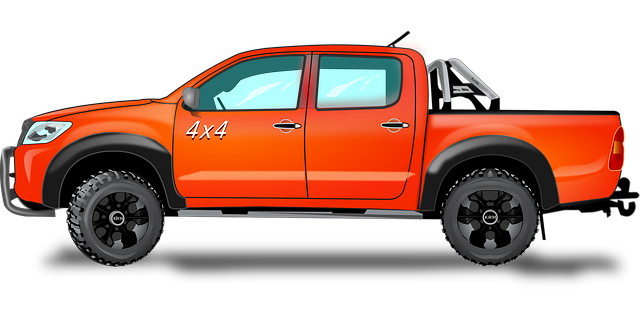Recovery lines, crucial for RGV truck performance, impact fuel economy and brake wear by affecting deceleration control. Optimized with high-quality ropes, strategic layout, pulleys, and regular maintenance, these lines enhance efficiency, reduce costs, and contribute to sustainability in the trucking industry. Proper care through inspections, replacements, and troubleshooting ensures safer operations, minimizes downtime, and maximizes RGV truck performance.
In the realm of RGV truck performance, recovery lines play a pivotal role in enhancing efficiency and reducing environmental impact. This article delves into the intricate world of these components, offering a comprehensive guide for optimising their potential. We explore the definition and purpose of recovery lines, dissect design considerations for enhanced efficiency, and analyse their influence on fuel economy and emissions. Additionally, practical tips for maintenance and troubleshooting are provided to ensure the longevity of these essential RGV truck performance facilitators.
- Understanding Recovery Lines: Definition and Purpose in RGV Truck Performance
- Components and Design Considerations for Optimal Recovery Line Efficiency
- The Impact of Recovery Lines on Truck Fuel Economy and Emissions
- Maintenance and Troubleshooting Tips for Ensuring Longevity of Recovery Lines in RGVs
Understanding Recovery Lines: Definition and Purpose in RGV Truck Performance

Recovery lines play a critical role in optimizing the performance of RGV (Rigid Granular Vans) trucks, ensuring they navigate the road efficiently and safely. These lines, designed to mitigate the effects of deceleration, are key to enhancing fuel economy and reducing wear on brakes and tires. By understanding recovery lines, fleet managers and drivers can make informed decisions to maximize RGVtruckperformance.
In simple terms, recovery lines refer to the distance a truck travels after applying its brakes before coming to a complete stop. This period allows the vehicle to regain some speed during deceleration, thereby minimizing the strain on braking systems. In the context of RGV trucks, which are commonly used for hauling bulk materials, efficient recovery lines translate to better control, reduced fuel consumption, and lower maintenance costs over time.
Components and Design Considerations for Optimal Recovery Line Efficiency

The efficiency of a recovery line, a crucial aspect for any trucking operation aiming for peak performance (RGVTruckPerformance), relies on several key components and thoughtful design considerations. Firstly, the choice of materials is paramount; durable, high-quality ropes and cables capable of withstanding constant strain and extreme conditions are essential. These should be selected based on their strength-to-weight ratio, ensuring maximum efficiency during recovery operations.
Additionally, the layout and configuration of the line must be optimized for seamless functionality. This includes designing a compact yet accessible route, minimizing sharp turns or kinks that could hinder smooth operation. Strategically placed pulleys and winches, capable of handling varying load capacities, are integral to facilitating efficient recovery processes. Regular maintenance and inspection are also vital to guarantee the integrity of the line, ensuring it remains in top condition for effective RGVTruckPerformance.
The Impact of Recovery Lines on Truck Fuel Economy and Emissions

Recovery lines play a significant role in enhancing RGV (refrigerated vehicle) truck performance, particularly in terms of fuel economy and emissions. By optimizing air flow within the trailer, recovery lines ensure that the refrigeration system operates at peak efficiency. This, in turn, leads to reduced energy consumption and lower fuel bills for fleet operators.
Moreover, efficient recovery lines contribute to a decrease in greenhouse gas emissions from trucks. As they improve overall system performance, these lines help minimize the amount of energy needed to maintain desired temperatures. This environmental benefit is particularly notable in light of the growing emphasis on sustainable transportation and reducing carbon footprints within the trucking industry.
Maintenance and Troubleshooting Tips for Ensuring Longevity of Recovery Lines in RGVs

Regular maintenance and prompt troubleshooting are key to extending the lifespan of recovery lines in RGV trucks, thereby enhancing their overall performance (RGVtruckperformance). Inspect these lines for any signs of wear, cracking, or damage at regular intervals. Replace any frayed or damaged sections immediately to prevent further deterioration. Keep an eye on the tension and condition of the recovery line cables, ensuring they are properly lubricated and adjusted according to the manufacturer’s specifications.
When troubleshooting issues with recovery lines, start by identifying the problem—is it a weak cable, a blocked pulley, or a misaligned system? Addressing these concerns promptly will save time, money, and potential damage to your RGV truck’s equipment. Remember, a well-maintained recovery line system ensures safer operations, reduces downtime, and optimizes the overall efficiency of your RGVtruckperformance.
Recovery lines play a pivotal role in improving the performance, fuel efficiency, and environmental footprint of RGV trucks. By optimizing these systems, truck manufacturers and operators can achieve significant gains in fuel economy and reduce emissions. Understanding the components, design considerations, and maintenance practices outlined in this article is essential for maximizing the benefits of recovery lines in RGV truck performance (RGVtruckperformance). Regular upkeep and troubleshooting can ensure these lines last longer, contributing to a more sustainable and cost-effective trucking operation.



